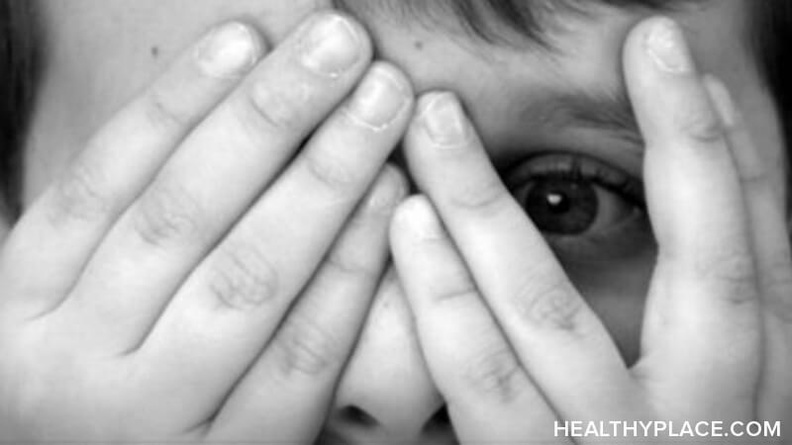How Learned Helplessness Causes Anxiety

Learned helplessness is a psychological concept I’ve been familiar with for a while, but had never, until recently, thought to apply it to anxiety. It is most commonly framed in terms of depression, but as I’ve given it more thought, the concept can very easily be carried over to anxiety and may provide insight as to why it can be so difficult to pick yourself up when things get really bad.
What Is Learned Helplessness?
That begs the question: what is learned helplessness? To put it simply, it is the idea that, after being faced with repeated negative, uncontrollable stimuli, a person will eventually give up trying to avoid anything unpleasant, even that which can be avoided, because they believe they have no control whatsoever.
The concept is one that has the weight of many scientific studies behind it, albeit ones that may be horrifying to modern sensibilities. In the late 1960s, Martin Seligman, while studying classical conditioning on dogs, discovered that certain dogs that received unavoidable electric shocks would fail to take action when faced with any subsequent, avoidable danger. Seligman later replicated the experiment on humans and found similar results.1
Applying Learned Helplessness to Anxiety
The application of learned helplessness to anxiety seems so obvious I feel embarrassed it took me this long to make the connection. At its core, learned helplessness is caused by feeling powerless in the face of an uncomfortable situation. We’re dealing with a lack of control – I can’t do anything to change the situation, so why try?
But the lack of control extends beyond just that. There’s no way to know when the uncomfortable situation is going to happen, even if you expect it. This uncertainty can make a world already painted in hostile colors look even more frightening.
I hope you can start to see how negative thought patterns can develop here. Say you’re in your house, which is your one safe place. If you expect bad things to happen when you leave that safe place, but don’t know when to expect them, you start to feel crippled. Maybe you avoid making plans in order to artificially maintain that sense of security. At worst, maybe you refuse to leave your safe place at all.
How to Combat Learned Helplessness
Fear not – though difficult, learned helplessness can be combatted. A major factor in its development is having a pessimistic explanatory style – basically, a negative way of viewing and interpreting what happens around you.2 If you have a way to change your pessimistic explanatory style, you will go a long way to combat learned helplessness.
The easiest way to do this is by finding someone to talk to. This can be a therapist, but it doesn’t even need to be something so formal – it could be a trusted friend or family member. Get someone who can challenge your negative thoughts, and help guide you to a clearer, more realistic, and healthier place.
Sources
- Nolen, J., "Learned Helplessness." Encyclopaedia Britannica. August 17, 2009.
- Legg, T., "What is learned helplessness?" MedicalNewsToday. May 31, 2019
APA Reference
DeSalvo, T.
(2019, June 12). How Learned Helplessness Causes Anxiety, HealthyPlace. Retrieved
on 2026, January 5 from https://www.healthyplace.com/blogs/anxiety-schmanxiety/2019/6/how-learned-helplessness-causes-anxiety
Author: TJ DeSalvo
You are missing the point about learned helplessness to a certain extent. When an animal, any animal, is in an inescapable painful situation, the prolonged arousal, that accompanies pain, represents a very real threat the animal's life. Very, high blood pressure, high heart rate, elevated stress hormones for an extended period of time can kill an animal (including a human - we are animals). In the course of an animal's life, there is a good chance that they will find themselves in a painful situation that they cannot escape from. In this case they need to have a fallback mechanism that will reduce their arousal level and allow them to endure the situation and not die from extended arousal. First, they will try anything they can think of to escape, but if there are no safe behaviors they can do to escape, the fallback mechanism will be triggered. They will stop trying to escape, because continuing to try to escape threatens their survival. This is learned helplessness. It is not 'giving up'. It is an adaptive mechanism to increase the chances of survival. But when an animal repeatedly faces the same inescapable painful situation, the fallback mechanism becomes automatic. It is habituated. Then, if later faced with a similar situation, even if there is a safe avenue of escape, the fallback mechanism will be triggered first, and they will not try to escape. The unconscious logic is "I know this situation, there is no way out, I won't waste any energy trying to escape". This happens, unfortunately, even when there are safe avenues to escape. But learned helplessness is not 'giving up' because one is discouraged. It is an adaptive response, that is, often inappropriate to the current situation, in which safe avenues of escape are available.